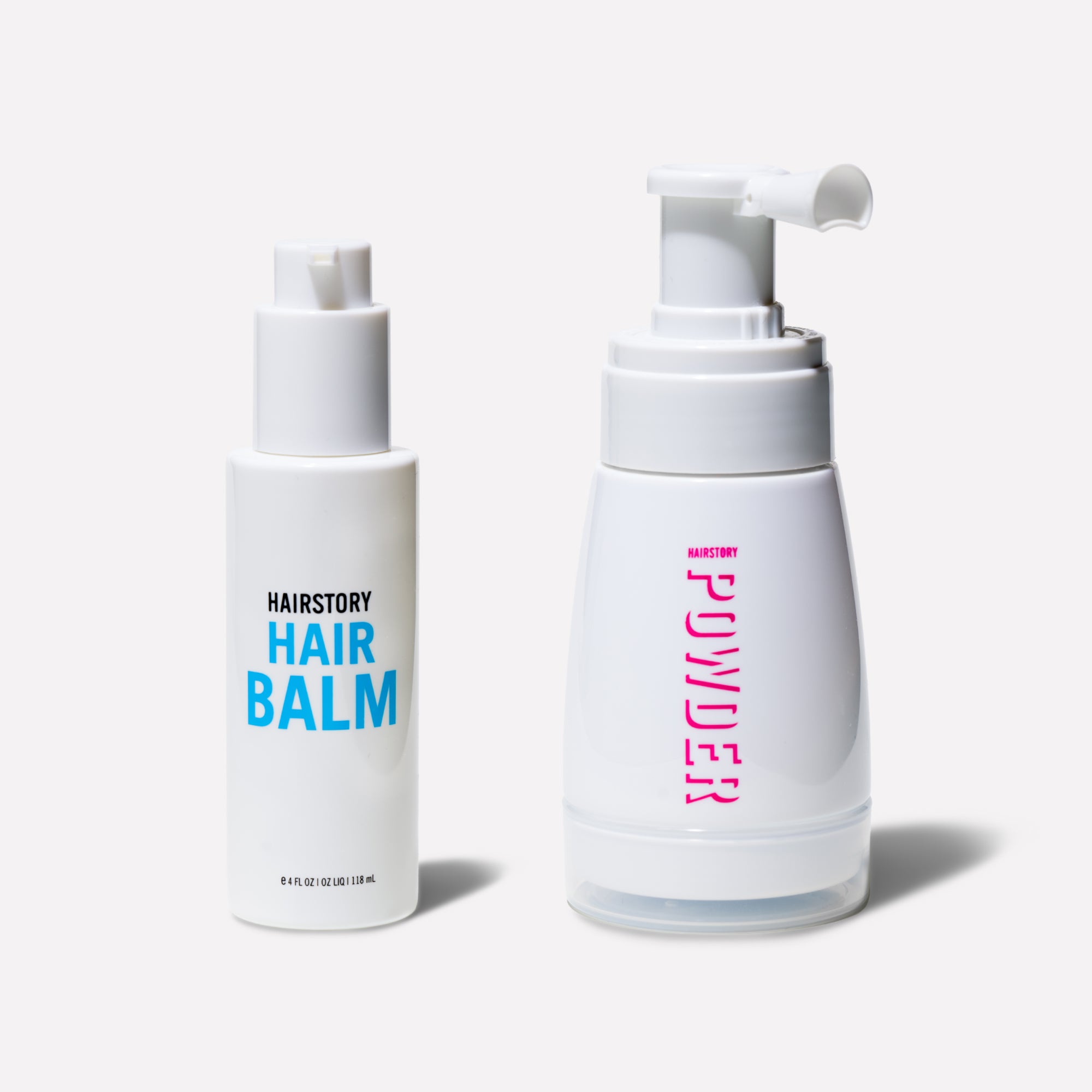What if we told you that you could build a clientele simply by doing your best work and showing it to the world on social media? It may sound too good to be true, but it is: The small “i” in the word marketing stands for one enormously important avenue for hairdressers: Instagram. If you need help for how to market yourself as a hairstylist, read on.
Advertising your talent and services via social media is hardly breaking news, but during several recent interviews we conducted with stylists of all types we discovered that an evolving attitude toward the content is welcome news: The best possible results come not from trying to divine what your followers and potential clients want to hear, but by saying exactly what you want to say. In other words, transparency and authenticity win the day – and win over hearts and minds.
How to Use Social Media to Increase Your Client Base
Seattle-based stylist Bree Ritter, aka Goodbye Horse Girl, thinks hairdressers are very lucky now, “especially if you’re new to it. Instagram is an incredible place to tailor what you’re interested in no matter how long you’ve been doing hair,” she says. Recalling her early years going to the mall and handing out business cards to intriguing strangers, “It still works,” she says, “but Instagram is a whole different story. Whatever interests you, you can put it out there, and you’ll attract your type of clientele. It’s a very free world and an exciting time in our industry. The more I am willing to be transparent, the cooler the people who I attract, and the deeper our connection is.”
Instagram is a way to build trust with a potential client long before an actual service. If you don’t know how to promote yourself as a hairstylist, using a social media platform like Instagram is a great place to start. “People just want to be comfortable and trust you, and I’m now seeing clients who bring in pictures of my work,” says Ritter. “I’m building trust with someone before we’ve ever met who likes my vibe. Having the same aesthetic is huge, and sharing cultural references is so much fun,” she enthuses. “I am finding more and more people who are like me – and if they aren’t, they’ve figured it out before they end up in my chair.”
“Put your work out there in an honest way – pictures of what you do and what you like, obviously, but also talk about what you don’t like,” suggests Ritter. “Use it to make your boundaries clear – how you feel about clients showing up late, for example. I get a flood of messages from fellow stylists saying, ‘Thank you for talking about things that no one talks about!”
Produce Content & Grow With Experience
You don’t have to have an accomplished body of work to post for your target audience. If you’re starting out, post others’ work that you aspire to do. But be transparent and give credit where credit is due and put out a call for models who will let you practice your craft and shoot photos for your free hairstylist advertising. If you don’t have enough content yet, promote your salon retailing side of the business by showcasing your favorite hair care products. What is true in our industry is also true on Instagram: the image is the thing, and learning to shoot compelling photographs is essential. First, you need models: “Offer to cut and style for free. Know which areas you need to grow in and put your focus there,” says Ritter. “Find a model. Create a look that gives you a voice. Raise awareness, even connect it to charity – write a blog, figure out what lights your fire and go for it!”
Brooklyn-based haircutter Joe Profita made it a mission to become a better photographer. “The more photos you take the better, and the more mistakes you make the better. You have to make mistakes to be good at this.” Joe prefers to shoot models rather than relying on his clients as subjects: “A model and a client are two different things,” he emphasizes. “Sometimes it isn’t possible to get a good photo of a client when you’re booked back-to-back, even if they’re comfortable being photographed.
A model comes to you for a complimentary or discounted service, and they know they have to give you the time to shoot them. That’s the tradeoff. A client, however, pays for a haircut. “To also expect them to want to be photographed, look like a model, look at the camera a certain way – some clients love it, but most of my social media images are of models,” says Profita.
Yes, you may get tired of posting constantly and being messaged at all hours. Whether you are selling hair products or showcasing your latest work at your beauty salon, you may begin to feel like your salon marketing obligations are never-ending. Scrolling through and editing your camera roll may be the last thing you want to do after a full day at the beauty salon. Your body may hurt from peering at your phone (camera/clock/flashlight/calendar/media center) so often. The vulnerability of putting out content about your artistry can wear on you, especially when you’re struggling to grow your client base. “But when I do it anyway,” says Ritter, my ego gets happy, and even a little positive affirmation goes a long way,” says Ritter. “It makes me want to look at everyone else’s stuff and tell them how good their work is and get inspired.”
You Are Not Your Likes
Hairdresser Beau Bollinger is the owner of Hairstory Studio Dallas and a deep thinker who encourages the ‘whole hairdresser’ to find meaning, purpose, and connection outside of the salon. He has some wise words for creative individuals to protect themselves from the self-esteem minefield that is social media.
“Instagram can be a powerful tool, but it can also cripple mental health and well-being,” Bollinger warns. While it is a visual representation of our work and a portfolio, you need to use it as you would any other tool and not as a marker of your value.” Constant comparison and feelings of being lacking are an unfortunate side-effect of the game when such carefully crafted visions of ideal lifestyles are social media currency. Remember that you can’t bring in abundance with an underlying sense of lack, and Bollinger reminds us that “You find what you’re looking for.”
Remember that this ‘game’ is based on algorithms more than taste; you may be seeing low-quality clickbait getting tons of engagement while sensitive work with beautiful photography lingers there seemingly unloved. You can only be responsible for what you post, and not the results. “If you’re constantly changing things to chase ‘likes’, says Bollinger, “you’re not actually curating your content – the system is.”
The fact is that you can only see so many clients in a day. How many more can you realistically service? Using social media to maintain connections with existing clients is just as valuable as attracting new clients. Remember that recruiting carries far more expense and energy than maintaining relationships with those already in your fold. As a stylist, if you are trying to create a marketing plan, make sure you factor in maintaining current customers before turning all your focus to new ones.
The beauty industry is full of media that features us, awards that validate us, and a vague value system that ranks a broad range of talent. “We’re all playing the same game to get a sliver of acknowledgement from people who we believe to know what is good, bad, or otherwise,” laments Bollinger.
Bollinger made the decision to relinquish the connection between the feedback and the content he puts out to the world. “When it resonates authentically, people who will value it will find it,” he assures. “If you’re feeling vulnerable and you don’t get the response you hoped for, it can make you question everything.” So take a step back and get clear on your intention. Make your purpose your criteria for posting, and bring it back to your ‘why’ to provide some objectivity. “If you are authentic with your content, you’ll never have to worry about branding or dialogue,” says Bollinger. “It becomes the branding and dialogue.”
“Our relationship with ourselves inevitably spills over into social media. Think not so much about what you need to do to appear relevant; instead, explore your feelings about relevance,” Bollinger advises. “If social media is forcing you to look in the figurative mirror, ask yourself what you need that you may not be getting. Be observant; be kind; resist being judgemental. Bringing internal challenges to the surface can often bring ease to them.” Ritter concurs: “If I start from feeling good inside rather than letting what’s outside dictate how I feel, I can get to a place of freedom.”
How to Prepare Yourself For Advertising Through Social Media
It’s natural to feel vulnerable when you put your work out there and emotionally connected to the results. But Bollinger has some suggestions for insulating yourself from disappointment:
- Get your priorities straight: Remember that marketing is important, but so is spending time with friends and family.
- You don’t have to put everything out there; create some boundaries for yourself when trying to reach your target audience through social media.
- Turn off notifications. Post, then give yourself some space and time so you’re not glued to the screen waiting to see where the first likes come from. Then look at your results only when you’re in a positive mood.
- Set specific times to attend to your social media duties. Post, respond, engage, and turn it off until your next scheduled session.
- Seeing tasteless posts getting juicy results by someone in the beauty industry? Remember that this isn’t about you. If you feel jealous, inquire what the conflict is, and simply minimize your exposure to what offends you.
- Treat business-related social media as just that – do it during business hours.















































